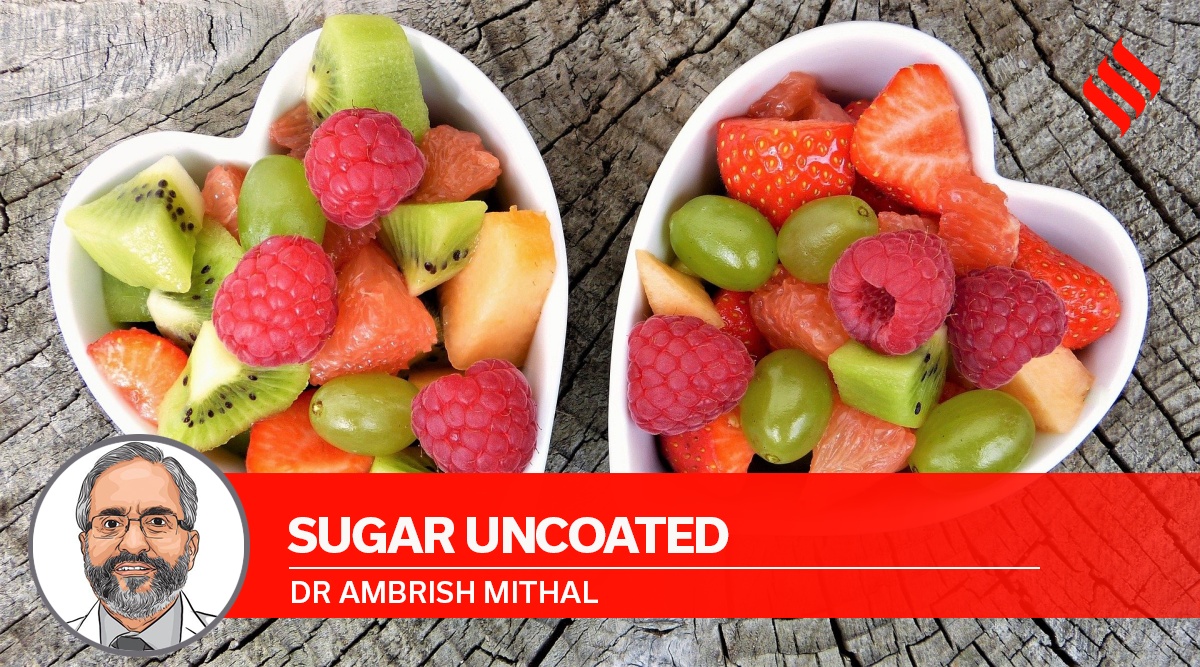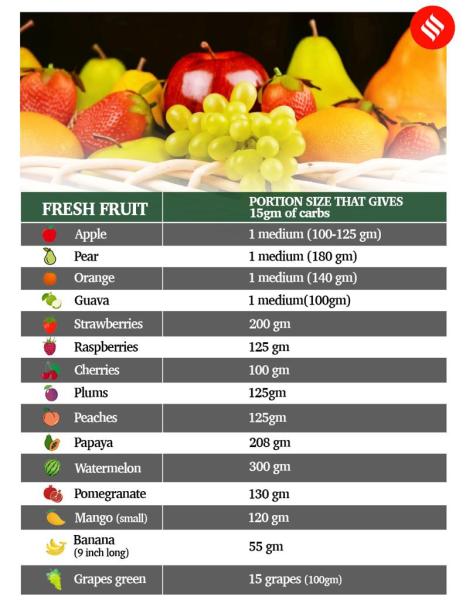Last week, an elderly man sat across from me lamenting his high blood glucose numbers. “I have always been well controlled. But in the last three months, my sugar levels have skyrocketed. I am very careful with my lifestyle. There’s just one change I’ve made to my diet. I have replaced two meals with fruit. This has increased my fruit intake. They are the healthiest and most natural foods one can have. They can’t raise my sugar level, can they?
What is the correct answer to my patient’s question? Fruits are said to be nature’s sweets, full of sweetness. Most of us love fruit because it looks and tastes good and (rightfully so!) feels like it’s good for our health. Fruits are an important part of our diet, as they are packed with numerous vitamins, minerals, and antioxidants such as polyphenolic flavonoids, vitamin C, and anthocyanins. These compounds not only protect the human body from free radical oxidative stress, but also increase the body’s immunity level.
Many fruits are rich in fiber, which plays an important role in controlling our blood sugar levels. A diet high in soluble fiber slows the absorption of sugar. Also, fiber makes us feel full, so we eat less. Fruits have a lot of water, which improves hydration. Both the fiber and the water in the fruit help fight constipation, a common problem in people with diabetes. Diets containing adequate amounts of vegetables and fruits reduce the risk of obesity, high blood pressure, heart attack, stroke and cancer.
So can people with diabetes consume fruits generously? Or, due to their inherent sweetness, are fruits strictly off-limits in diabetes? The truth, as always, lies somewhere in the middle. First, any fruit can be eaten by a person with diabetes. Second, not all fruit is created equal, and recommended serving sizes vary widely based on glycemic index (GI). The GI is a rating of foods on a scale of 1 to 100. The higher the score, the faster the absorption and consequent rise in blood sugar. Third, the most beneficial effects of fruit are seen only with fresh fruit and not canned or processed fruit, many of which contain added sugar and may lack nutrients. Fourth, fruit juices are not the same as fruits. In fact, they contain only the sugary part of the fruit without the fiber, are much less nutritious, and raise blood sugar.
What fruit and in what quantity is advisable for people with diabetes? The key to fruit consumption in diabetes is to incorporate them into the daily intake of carbohydrates. So if you’re going to add fruit to your diet, you’ll need to cut back on other carbohydrates. The amount of carbohydrates present in the fruit determines the impact on the blood sugar level. For people with diabetes, a serving of fruit should contain 15 grams of carbohydrate and the total daily intake should not exceed 30 g. So, one can have a 15g carbohydrate serving of fruit in one sitting and a total of two servings of fruit in one day. Eating fruits as a mid-morning or midnight snack is preferable to having them as a dessert after meals, as they increase the carbohydrate load. Instead of consuming large portions of fruits, it is better to combine them with high-protein foods such as dairy products or nuts. Since fruits lack protein, this makes the snack more nutritious and filling.
The glycemic index also helps us choose our fruit, because it reflects the rate of rise in blood glucose. Examples of low GI fruits (GI 20-49) include apples, avocados, cherries, guava, peaches, pears, and strawberries. Medium GI fruits (GI 50-69) include figs, grapes, and oranges. Fully ripe bananas and dates are examples of high GI fruits. Serving sizes of different fruits that provide 15 g of carbohydrate are shown in the table.
!function(f,b,e,v,n,t,s)
{if(f.fbq)return;n=f.fbq=function(){n.callMethod?
n.callMethod.apply(n,arguments):n.queue.push(arguments)};
if(!f._fbq)f._fbq=n;n.push=n;n.loaded=!0;n.version=’2.0′;
n.queue=[];t=b.createElement(e);t.async=!0;
t.src=v;s=b.getElementsByTagName(e)[0];
s.parentNode.insertBefore(t,s)}(window, document,’script’,
‘https://connect.facebook.net/en_US/fbevents.js’);
fbq(‘init’, ‘444470064056909’);
fbq(‘track’, ‘PageView’);
.

